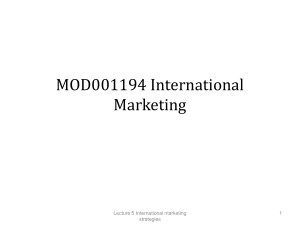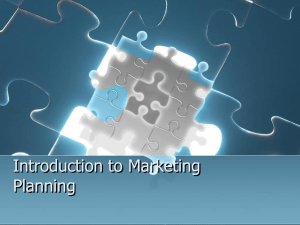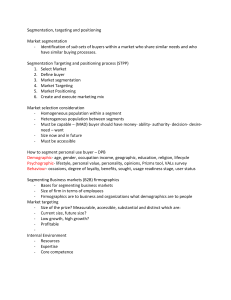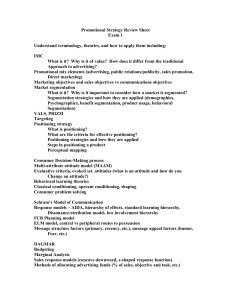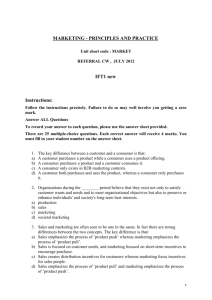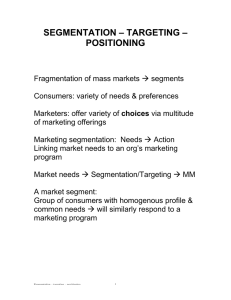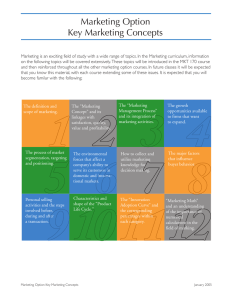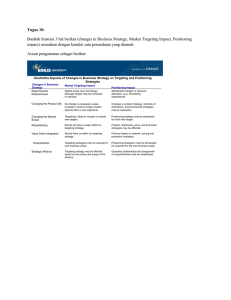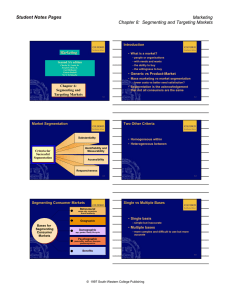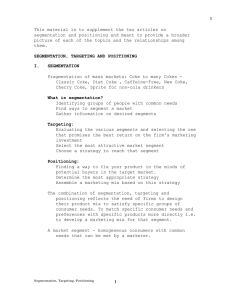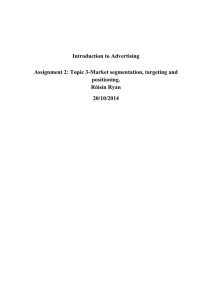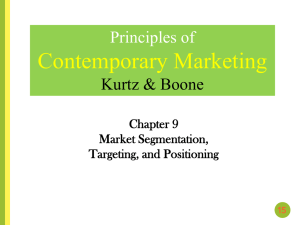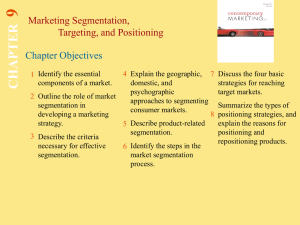1. ______ is to cost as promotion is to communication. a. Product b
advertisement
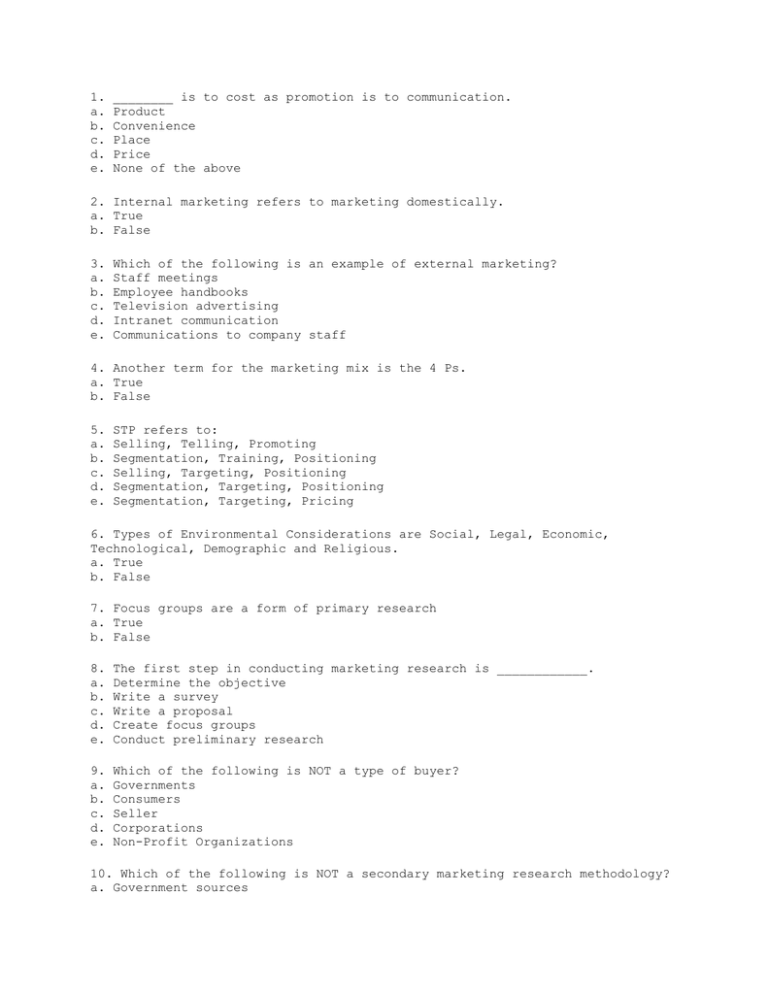
1. a. b. c. d. e. ________ is to cost as promotion is to communication. Product Convenience Place Price None of the above 2. Internal marketing refers to marketing domestically. a. True b. False 3. a. b. c. d. e. Which of the following is an example of external marketing? Staff meetings Employee handbooks Television advertising Intranet communication Communications to company staff 4. Another term for the marketing mix is the 4 Ps. a. True b. False 5. a. b. c. d. e. STP refers to: Selling, Telling, Promoting Segmentation, Training, Positioning Selling, Targeting, Positioning Segmentation, Targeting, Positioning Segmentation, Targeting, Pricing 6. Types of Environmental Considerations are Social, Legal, Economic, Technological, Demographic and Religious. a. True b. False 7. Focus groups are a form of primary research a. True b. False 8. a. b. c. d. e. The first step in conducting marketing research is ____________. Determine the objective Write a survey Write a proposal Create focus groups Conduct preliminary research 9. a. b. c. d. e. Which of the following is NOT a type of buyer? Governments Consumers Seller Corporations Non-Profit Organizations 10. Which of the following is NOT a secondary marketing research methodology? a. Government sources b. c. d. e. Academic sources Focus groups Consultants/research brokers Industry publications 11. Which of the following is an obstacle for marketing distribution channels? a. Marketers b. Retailers c. Brokers d. Sellers e. Obfuscation 12. One of the purposes of market segmentation is to maximize limited resources. a. True b. False 13. The four areas of global strategic marketing planning include: a. strengths, weaknesses, opportunities, threats b. outsourcing, mergers, acquisitions, corporate insolvency c. market situation analysis, objectives, strategies, action plans d. democracy, communism, socialism, terrorism e. segmentation, targeting, positioning, training 14. In industries where competition is highly localized, a decentralized structure where most of the decision-making is made at the country-level is often appropriate. a. True b. False 15. The following is not a reason for global branding: a. Economies of scale b. Development costs that can be spread over large volumes c. Brand awareness advantages – global brands are more visible than local brands d. Cultural barriers e. The ability to capitalize on media overlap between and among countries 16. The following is not a benefit of Global Marketing: a. Cost reduction arising from savings in both workforce and materials b. Improved products and program effectiveness c. Layoffs due to outsourcing to other countries d. Enhanced customer preference e. Increase competitive advantage 17. In identifying international market opportunities, the first thing that an International Marketer should do is to select indicators and collect data to determine overall market attractiveness. a. True b. False 18. Which of the following new measurement tools are not available to Internet Marketers: a. Online surveys b. c. d. e. Telemarketing calls Bulletin board and chat groups Web visitor tracking Virtual panels 19. There is no difference between E-Commerce and E-Business.. a. True b. False 20. If you put your grandmother’s antique vase up for auction on eBay, you are engaging in: a. Supply Chain Management b. Business to Business Communication c. Enterprise Resource Planning d. Customer to Customer e-commerce e. Customer Relationship Management 21. Which one of the following is not a concern of e-business? a. Privacy issues b. Security issues c. Internet ethics d. Role of government e. Data-mining 22. By 2007, global e-business companies will find it unnecessary to localize their websites because all Internet users will know English. a. True b. False 23. Which of the following is not an Internet Marketing Strategy? a. Cost plus b. Click-thrus c. Stickiness d. Data-mining e. Data cookies 24. E-commerce blurs the distinction between goods and services. a. True b. False 25. Regional trade organizations are groups of companies that work together to open new markets and develop business opportunities. a. True b. False 26. Which of the following is not considered a barrier to trade? a. Import policies b. Investment barriers c. Lack of intellectual property protection d. Price skimming e. Trade restrictions 27. Ethics are considered an important part of international marketing management. a. True b. False 28. Which of the following is not a result of Globalization? a. Loss of jobs b. New job creation c. Market pricing d. Reducing cost inefficiencies e. Increased economies of scale 29. Which of the following is a type of outsourcing? a. Contract manufacturer b. Integrated marketing communications c. Primary research d. Computer-aided design e. Generalized System of Preferences (GSP) 30. Which of the following would not have ethical considerations? a. Westernization of other cultures b. Management styles c. Product safety d. Labor standards e. Reoccurring production standards
